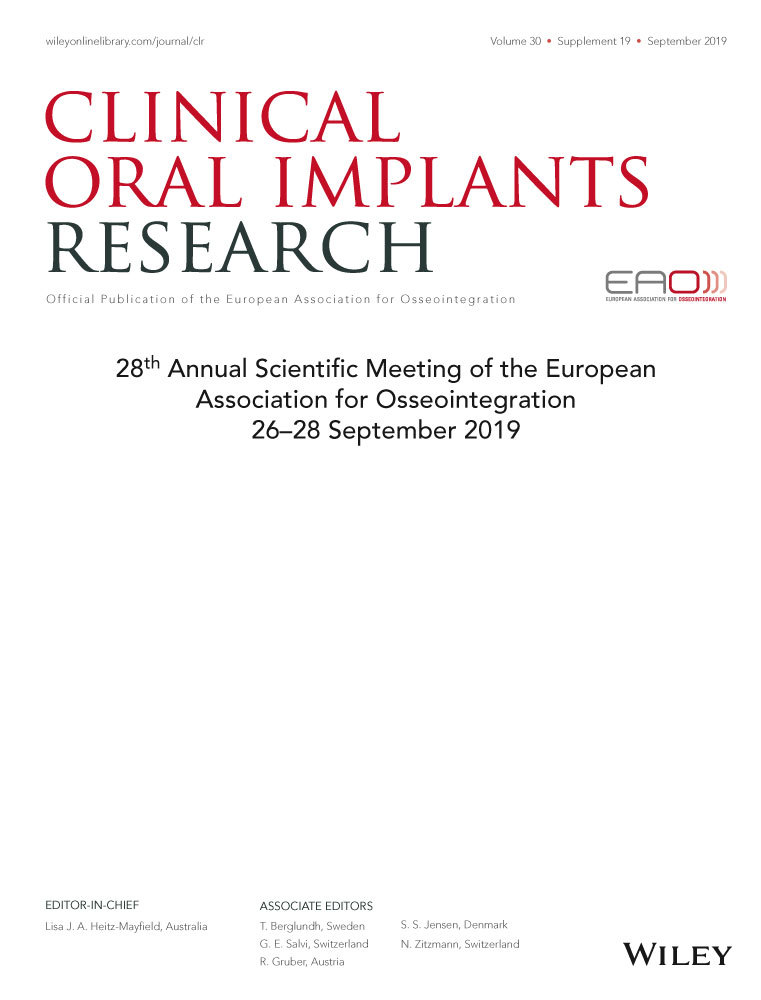Periodontal regeneration with bone marrow concentrate versus bone marrow mesenchymal stem cells
16071 POSTER DISPLAY BASIC RESEARCH
Background
Multipotent Mesenchymal Stem Cells (MSCs) can be obtained from bone marrow aspirate (BMCA) or further selected as bone marrow stem cells MSCs (BM-MSCs). Promising results have been presented when BMCA is used to regenerate different bone sites, but in periodontal defects is still poorly described. The use of BMMSCs to achieve periodontal regeneration showed promising but conflicting results, with increase of bone formation, but few induction of cementum formation.
Aim/Hypothesis
Compare the use of bone marrow concentrate aspirate (BMCA) and the bone marrow mesenchymal stem cells (BM-MSC) on the periodontal fenestration defects fill in rats. The hypothesis of the study was that both therapies would reach better periodontal tissue formation than spontaneous healing.
Material and Methods
Periodontal fenestration defects were created bilaterally in the mandible of 54 isogenic rats, as follow- 1) Control Group- spontaneous healing, 2) BM-MSCs Group- pellet with 1.2 × 106 cells, 3) BMCA Group- 25 μl of BMCA. BM-MSCs was obtained from iliac crest of 2 isogenic rats, isolated with Ficoll and separated by flow cytometry to obtain a CD45-90 + BM-MSCs, which was characterized in vitro as MSCs. BMCA was also obtained from iliac crest aspirate of each rat of the group immediately prior to the surgeries, centrifuged twice to achieve a concentrate of mesenchymal cells an platelets. The animals were euthanized at 15, 30 or 60 days postoperative (N = 6), to analyze- dosage of the cytokines Sclerostin, Osteopontin (OPN) and Osteoprotegerin (OPG), bone volume in Micro-CT, extension of cementum (EC), orientation of periodontal ligament (PDL) fibers and immunostaining of the proteins Osteocalcin (OC) and RANK-L. Statistical analysis was performed using ANOVA two-way α=5%).
Results
CD45-90 + BM-MSCs expressed osteoblast and adipogenic phenotype, confirmed by matrix mineralization deposits, lipid accumulation and ALP and PPARγ2 expression. All groups almost fulfilled periodontal defect with new bone in 60 days, but the use of BM-MSCs showed faster an greater bone formation in early stages of periodontal regeneration, with higher bone volume (P < 0.05), dosage of OPG (P < 0.01), OPN (P < 0.001) and Sclerostin (P < 0.0001) and lower immunostaining of RANK-L (P < 0.01) compared to Control or BMCA groups. Also, BM-MSCs showed significant higher formation of new cementum-like tissue (P < 0.0001) with inserted PDL fibers in 30 and 60 days compared to other groups, which could be corroborated by the high dosage of Sclerostin in all analyzed times (P < 0.0001). BMCA prove its benefits in bone regeneration showing high bone volume (P < 0.0001) and lower RANK-L immunostaining (P < 0.05) in 30 days and high OC immunostaining (P < 0.05) and dosage of OPN (P < 0.01) in 15 days.
Conclusion and Clinical Implications
Use of BM-MSCs is a useful strategy for regeneration of fenestration defects with more benefits than BMCA in new cementum formation with inserted fibers. BMCA showed faster bone regeneration than Control Group in early stages. For clinical practice the outcomes are promising due the difficult in to form complete periodontal microarchitecture. Further pre-clinical studies in chronic and large-size defect are needed to confirm this benefits, before application in clinical trials.




